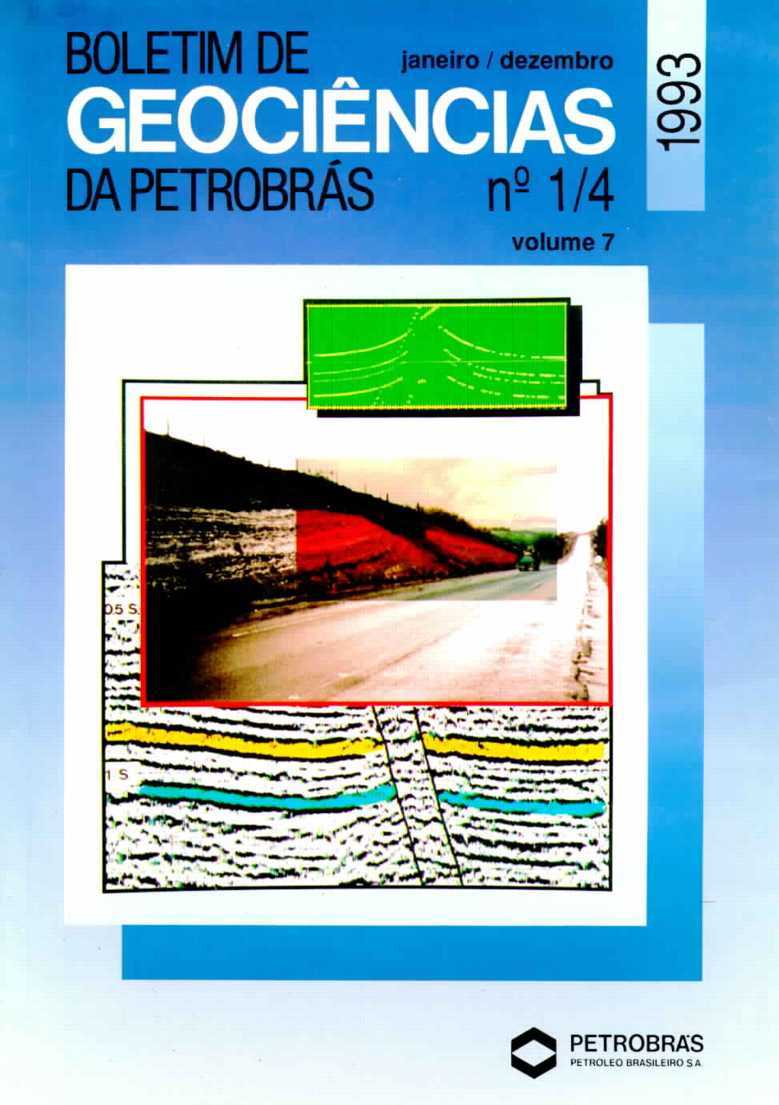Geochemistry of the carbonate reservoirs of the Macaé Formation (Early Midlle Albian) in the Pampo and Enchova fields, Campos Basin, Brasil
Abstract
Geochemical data indicate Ihat the carbonates of the Lower Macaé (Ear/y-Middle Albian) were deposited in a restricted, shaJlow, warm-water marine environment. The chemical values of minor and trace elements detected in whole-rock analysis are similar
to those displayed by sediments originating on modem shallow marine platforms. The suggest that theenvironment was restricted and displayed high salinity. A ÕC13 content of around +4 supports this hypothesis. Redox conditions were analyzed, based on cerium behavior. This element is slight1y depleted to non-depleted in relation to lanthanum and niobium, characterizing redox conditions different trom those prevailing today. This is interpreted as a characteristic of the restricted sea of the Macaé Formation, where oceanic circulation was limited. The distribution of the ETRL light rare-earth elements (LREE) vis-a-vis the ETRP heavy rare-earth elements (HREE) characterizes a slight, homogenous contribution from the contment, where both weathering and organic matter content must have been low at the time of deposiaon. The carbonates of the Macaé Formation were deposited in a marine environment. initiating its diagenetic history. The aJlochems underwent intense micritization, probably caused by boring algae. Cementation occurred in lhe form of fibrous rims enveloping the grains. Microprobe data reveal a sigmficant magnesium content and the absence of strontium, suggesting that lhe precursor of this cement was magnesian calcite. The passage through an environment of meteoric waters was marked by a complete mineralogical transformation, where sedimenls originally formed of aragonite and magnesian caleite became solely caJcitic rocks. This
environment was the setting for neomorphism, syntaxial cementation in remnants of echinoids, and lhe formation of rhombohedral rims on grains. This rhombic crystal habit suggests that the origin was an environmentof low safinity. Continuous cementation in a zone of meteoric waters may transform the rims into a mosaico In chemical tenns, lhe passage trom rhombohedral rim to mosaic, due to the Ionger presence ofthe diagenetic fluid, maybe indicatedby similar values for minor and trace elements in the rims and mosaico The less-positive ÕC13 and more-negaave ÕC18 values of samples trom the Enchova Field, in addition to their low strontium content, indicate greater exposition in a meleoric environment. In the subsurface realm, chemical compaction, dissolution, and the cementation of fractures were important processes. Dolomitization is believed to be assocfated to saline solutions.
Downloads
Published
Issue
Section
License
This license enables reusers to distribute, remix, adapt, and build upon the material in any medium or format, so long as attribution is given to the creator. The license allows for commercial use.




